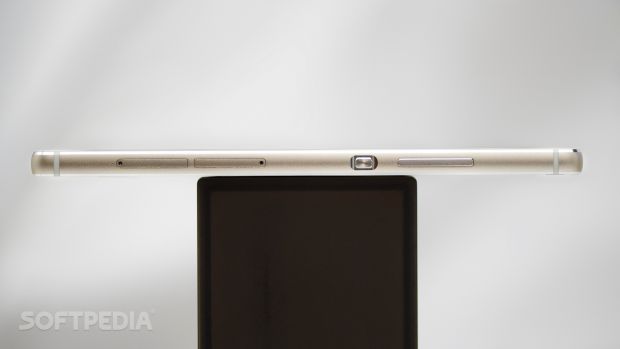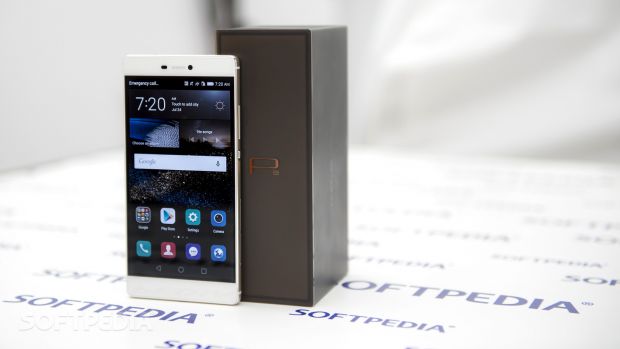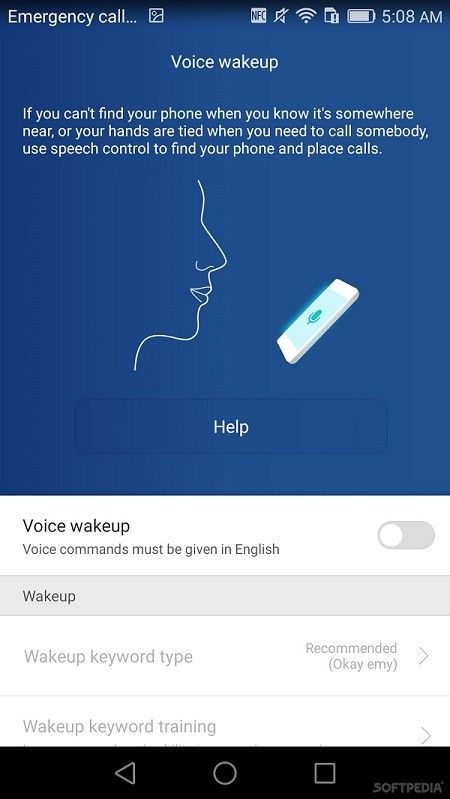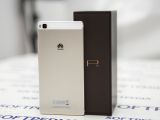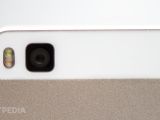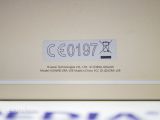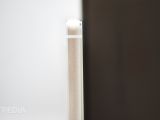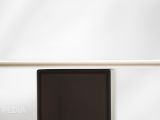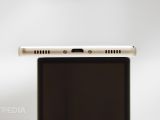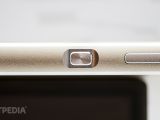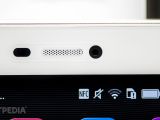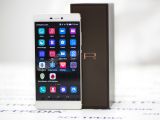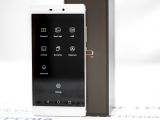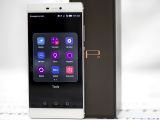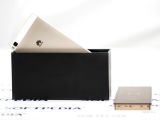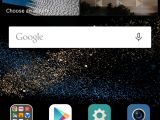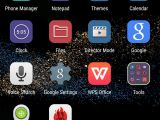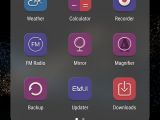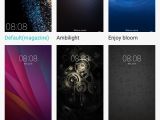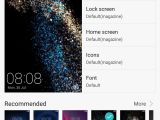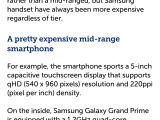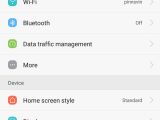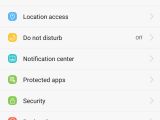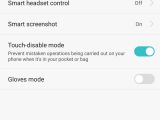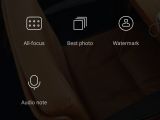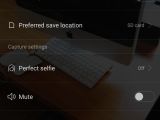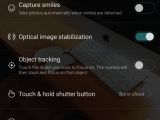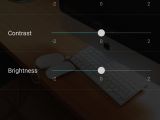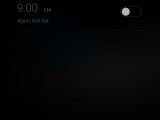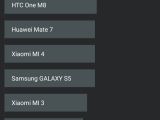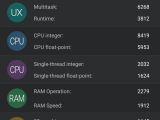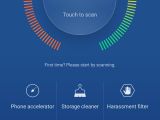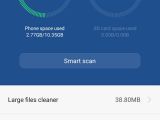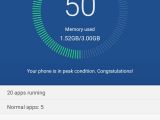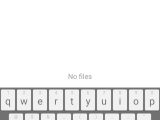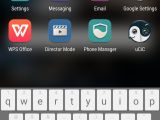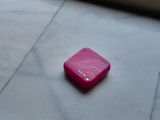| INTRODUCTION | SOFTWARE |
| DESIGN | BATTERY |
| DISPLAY/CAMERA | CONNECTIVITY |
| PERFORMANCE | CONCLUSIONS |
Chinese-based electronic giant Huawei, no so long ago considered to be a pretty boring visitor to the smartphone market, is on the rise. Big time.
The device maker managed to top revenue of $46.5 billion last year and will soon launch a Nexus smartphone alongside Google. This path of glory culminated this July, when Huawei displaced Microsoft (Nokia division) to become the world’s third-largest mobile phone vendor.
Huawei has been quite active this year, releasing smartphone after smartphone. IFA 2015 has just ended and the company was present on the grounds during the event, showing off a pair of new smartphones, including the G8 and Mate S, which are pretty well-specced devices.
But la crème de la crème was unveiled by Huawei a few months back, in the form of the P8, the company’s flagship.
However, the question is: can Huawei, a company emerging out of China, really compete with the likes of Samsung and Apple? The P8 does look extremely gorgeous to our eyes, but will it be able to stand against reputed smartphones like the iPhone or the Galaxy S family? In what follows, we’re going to try to answer that question by dissecting most of the aspects related to the P8 flagship.
| Release date | April 2015 |
| OS | Android 5.0.2 Lollipop with Emotion 3.1 UI |
| CPU | HiSilicon Kirin 930 (quad-core 2GHz Cortex A53 & quad-core 1.5GHz Cortex-A53) |
| GPU | Mali-T628 MP4 |
| Display | 5.2-inch with 1920 x 1080 pixel resolution, 424ppi |
| Cameras | Primary: 13MP, autofocus, optical image stabilization, dual-LED (dual-tone) Secondary: 8MP, 1080p |
| Battery | 2680mAh non-removable battery |
| Storage | 16GB/64GB |
| RAM | 3GB of RAM |
| Dimensions | 144.9 x 72.1 x 6.4mm / 5.70 x 2.84 x 0.25 inches |
| Weight | 144 g / 5.08 oz |
Design
We’ve seen many high-end phones arrive in our newsroom, but the Huawei P8 comes packaged quite tastefully. Slotted in the sideway, you’ll need to pull out a drawer for the phone to be revealed to your eyes. The device is sleek and comes with chamfered edges and rounded corners. The camera perfectly embraces the chassis, creating a super sleek profile that Samsung Galaxy S6 owners will be jealous of.
The phone takes advantage of a full metal unibody, so there’s no removable battery on board, although the presence of the microSD card slot has been assured thanks to the dual hybrid SIM card slot. The metal body has been treated to what Huawei is calling “diamond shaped blasting,” and its role is to enhance the texture on the back.
The phone is extremely thin, boasting a profile of just 6.4mm / 0.25 inches. By comparison, the Samsung Galaxy S6 has a 6.8mm / 0.25 inches frame, so the P8 beats it in terms of thinness.
Taking a look around the device, you’ll notice that the left side is completely bare, while the right side houses the power button, volume rocker, microSD card slot, and SIM card slot. On top lies the headphone jack, and at the bottom we have the microUSB port, flanked by the dual speakers. On the front, we can spot a multi-colored notification LED, right next to the front-facing camera, earpiece, and your usual bag of sensors.
Display and camera
As we told you in our review of the Honor 6 Plus, Huawei is a firm believer that FHD screens can deliver all the image quality a consumer needs. According to the company, QHD panels are useless, mainly because they are battery hogs, and secondly, because the human eye can’t really distinguish between a QHD and FHD display unless it is looking at it from proximity.
So the P8 offers a 5.2-inch IPS LCD display with 1080p resolution (1920 x 1080 pixels) and 424 ppi. Frankly, the display is one of the best features of the phone, and the FHD standard seems more than enough. The images are crisp and the colors vividly rendered. Contrast is great, and viewing angles and outdoor visibility are pretty good.
Huawei is allowing you to change the color temperature of the display from the Setting menu in case you prefer things a little warmer or a little cooler.
Don’t expect to see any physical home buttons on the phone, so you’ll need to rely on the three navigation buttons that will pop on screen, leaving a bar of blank space below. What’s surprising is that Huawei hasn’t taken the opportunity to fill it up with its logo.
Now, moving along to the photography department, the Huawei P8 arrives with a 13MP rear camera with OIS (optical image stabilization). The Chinese device maker says that they have incorporated the world’s first four-color RGBW sensor, which is supposed to deliver better brightness in high-contrast scenes and increased low-light performance.
What’s cool is that you can launch the camera application directly and take a photo in just under a second by simply double-tapping the volume-down key when the phone has been unused.
The camera app includes options for Panorama, Super Night, HDR, All-focus and Best Photo. There are also a series of live filters available if you want to get a bit artistic with your snapshots.
While most of the features we’ve talked about above can be identified in other smartphones, there’s one that is unique to the P8. It’s called Light Painting and allows users to capture light trails created by moving cars or stars in the sky. You can see what this feature can do by scrolling down to the gallery.
There’s also a funny quirky app Huawei has incorporated into the P8. It’s called Mirror and will have you blow into the microphone in order to get a bathroom mirror-like selfie image of yourself.
Image quality using the P8 is quite good, and there are plenty of details to look at even when you have zoomed in. Naturally, you’ll be getting the best results when shooting in natural light, but if you try to do the same against a brightly lit background or an artificial light source, the results aren’t all that great.
All in all, the P8 boasts a pretty decent snapper, but we happen to prefer the dual camera setup on the Honor 6 Plus a lot better.
The Huawei P8 can shoot decent 1080p videos in 30fps, but mind you, there’s no 4K recording option. However, you have a dedicated viewfinder for clips.
Performance
Like most Huawei handsets out there, the P8 makes uses of the company’s in-house chipset, the HiSilicone Kirin 930 processor clocked at 2GHz (for the standard version) and the Kirin 935 clocked at 2.2GHz for the more advanced version. Our test unit came with Kirin 930 on board in combination with Mali-T628 GPU, 3GB of RAM, and 16GB of internal storage.
Huawei chipsets are of pretty decent quality, and in the AnTuTu benchmarking test, they scored around 44,087 points, good enough to outperform last year’s flagships like the Meizu MX4, Samsung Galaxy Note 4 or OnePlus One.
But compared to Samsung’s Exynos 7420 processor, which is powering the Galaxy S6, the Kirin 930 inside the new Huawei P8 fades completely.
We’ll remind you here that the Galaxy S6 edge managed to score 69K points in the same benchmarking test, and recently a prototype device with an FHD display and Qualcomm’s next-gen Snapdragon 820 has been spotted going through the same benchmark app and scoring a massive 84K points. The difference is quite huge.
Anyway, getting to how the P8 actually operates in real life. The phone does feel fast and responsive at first, but it’s just a matter of time before it gets slower and apps start crashing for no good reason.
Also, as we noticed in the case of the Honor 6 Plus, the phone can get quite hot even after watching a few videos on YouTube, and you’re compelled to put the it down and let it cool off for a few minutes.
Playing games or using an application for a prolonged period of time will warranty the same result. So our best advice is to use the P8 in moderation.
Huawei does attempt to fine-tune what’s going on board via the Phone accelerator feature, which scans the device and ends all unnecessary processes, but even so, the flagship could run a lot better.
The same optimization app includes options for storage cleaning, power saving, and traffic management.
Software
The Huawei P8 launched with Android 5.0 Lollipop out of the box with the company’s own Emotion UI 3.1 plastered on top. The P8 is probably going to be one of the first Huawei handsets to be getting Android 6.0 Marshmallow (some whispers say it will happen until the end of the year).
Just as we told you back when we reviewed the Honor 6 Plus, there’s no app tray to be found in EMUI, which gives a slightly more pronounced iOS look and feel. Still, this problem finds a quick solution because apps can be grouped together in folders. Users can also change the home screen grid layout from 4x5 to 5x4 or even 5x5.
Apart from the lack of app drawer, you might also be bothered by the fact that Notifications and Settings are separated into two different tabs when you swipe down from the top. Notifications will come up first, and from there, you need to either tap the tab or swipe to the side to get to Settings. This will probably not be something folks used to the real style of Android 5.0 will understand and like.
The interface might not be everyone’s favorite cup of tea, but Huawei has sprinkled all sorts of interesting features in this handset.
For example, the Clever Speech awareness feature allows users to wake the phone by saying “where are you?” In reply, the device will be lighting up the flash LED, playing some music or saying a rather eerie “I’m here.” Still, don’t expect to hear your phone if you’re at the airport and the device slipped in the space between the seat you are waiting on and the wall. You'll need to be in a quiet environment to be able to do so.
Another neat trick is that you are able to capture a screenshot by knocking (with your knuckles, yes) on the display. You can also draw a circle or access a very handy crop tool. We’re curious how Huawei plans to expand the functionality of this knuckle version in the future.
Battery
The battery life is one of the biggest hurdles high-end smartphones face today. But Huawei is confident the 2,680 mAh battery it has placed under the hood of the phone is more than enough to sustain a decent life cycle on board of the device.
With this in mind, a moderate user would be able to squeeze up to 1 day and a half out of usage. But if you’re planning to play games, watch video and chat on WhatsApp all day, you’d better expect the life source to go out in about 8 hours. Which is pretty average.
Connectivity
The usual set of sensors is housed inside the Huawei P8, which includes support for 4G LTE across a wide variety of bands. The smartphone also features LTE Cat 6 connectivity for even faster data speeds.
The P8 boasts a dual-SIM setup where the main card slot will be able to house a micro SIM and the secondary is home to the nano SIM. The secondary slot is of a hybrid variety, meaning it can work as a microSD slot.
Huawei’s latest flagship features dual-band Wi-Fi 802.11 a/b/g/n, but Wi-Fi 802.11ac is not supported. Bluetooth 4.1 is also on board, as well as a microUSB 2.0 port with support for USB Host (to attach USB flash drives and peripherals) and NFC.
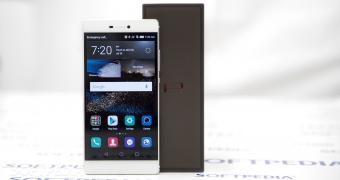
 14 DAY TRIAL //
14 DAY TRIAL // 